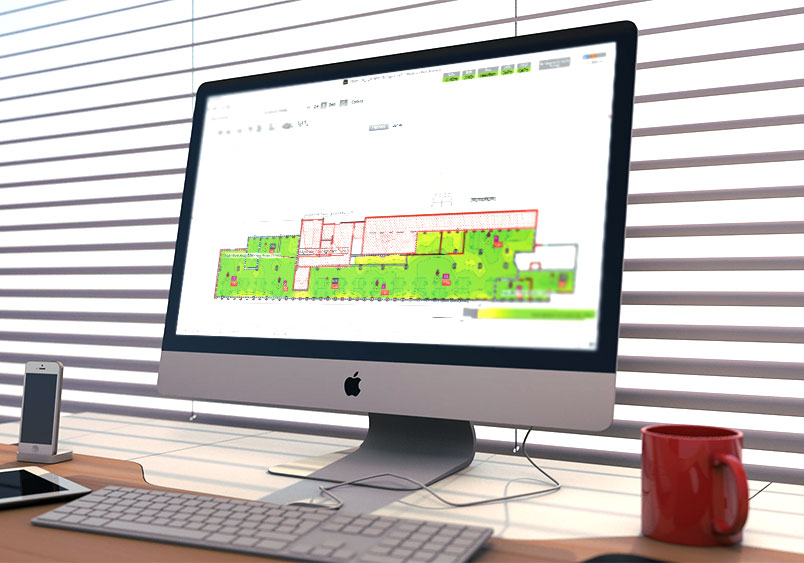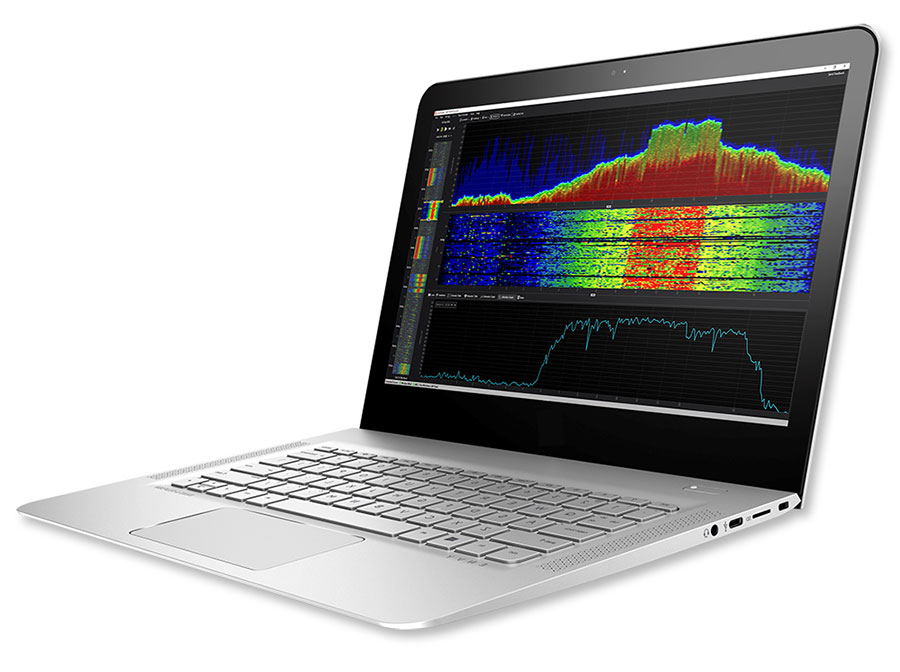

Predictive Wi-Fi Design.
Predictive WiFi Design offers a cost effective and practical solution to estimate your site requirements. This is useful for new buildings, allowing your network to be planned prior to moving into the building.
Utilising detailed building plans. We can provide detailed recommendation of hardware requirements and access points for maximum WiFi coverage.
With this in mind download our wifi questionnaire below and let us help you today.
Active WiFi Survey.
This survey is where an Ekahau certified engineer carries out an “AP on stick” survey. This is a manual survey where the engineer will walk around the building with the access point on a stick to assess the coverage and signal strength.
This also allows for detailed analysis on any external interference with the access point, giving you a real life scenerio of how the WiFi will work. The engineer will then be able to compile a detailed access point location plan based on true findings. The heatmaps will show each access point’s coverage capability and highlight any interference.

Passive WiFi Survey’s.
ference in certain areas, with a Passive WiFi survey this can eleviate the problems. We can analyze, report and inform you what the current or potential issues can be in the WiFi areas.
This information can then be used help to remedy poorly installed WiFi.
Installation.
We offer an in-house installation service through out the United Kingdom, from installing data cabling to WiFi replacement. Our team have carried out small to large scale projects.
Which Survey do I need?
Predictive
Network speed is now an essential toolkit needed for IT personnel. One of the problems is that cabling infrastructure gets forgotten about! With the introduction of 40Gb backbone architecture, needing a high spec fibre cable between hardware couldnt be more important
Active
This provides more insight on the network connectivity and/or performance. Things like packet loss, packet delay, and access points you’ve associated with, can be measured during active site surveys. As the name suggests, with active surveys the Wi-Fi adapter is receiving AND sending packets to figure out what’s truly going on with the network.
Passive
Are performed to get an understanding of the RF characteristics on-site. By RF characteristics I mean Wi-Fi signal strengths, noise levels, SNR (signal-to-noise ratio), and the like. The reason the site surveys are called “passive” is that your Wi-Fi network adapter is pretty much just listening to packets when performing passive site surveys. OK, the NIC might send some probes out, but that’s about it.










